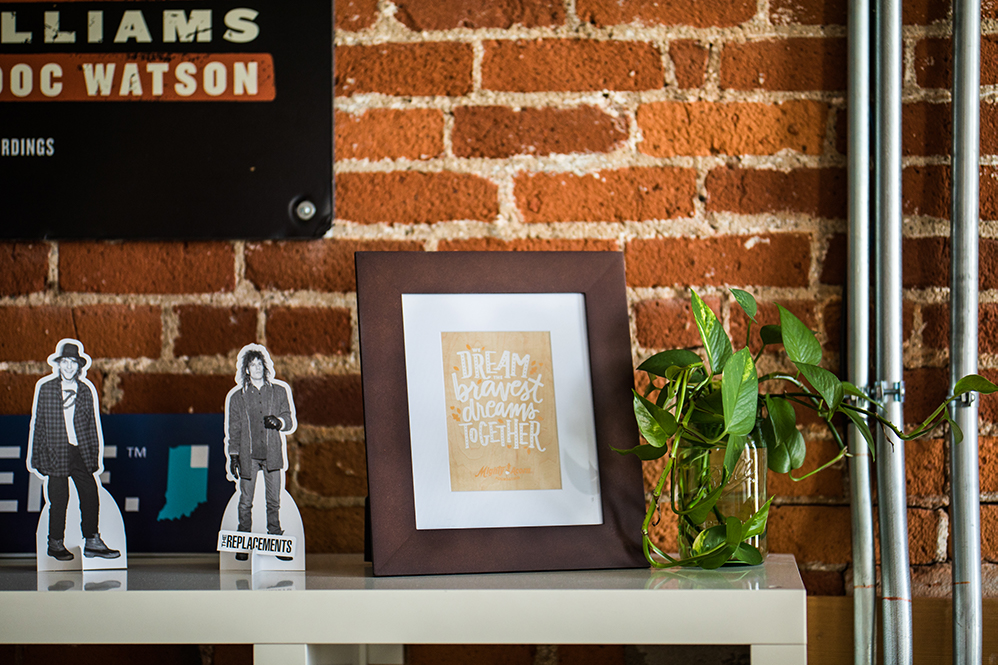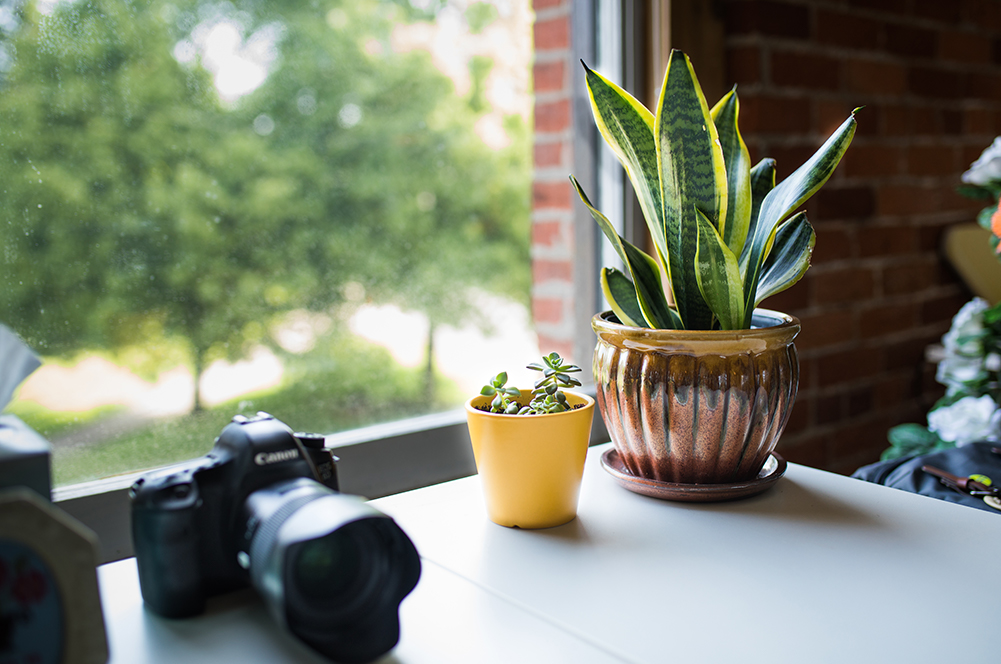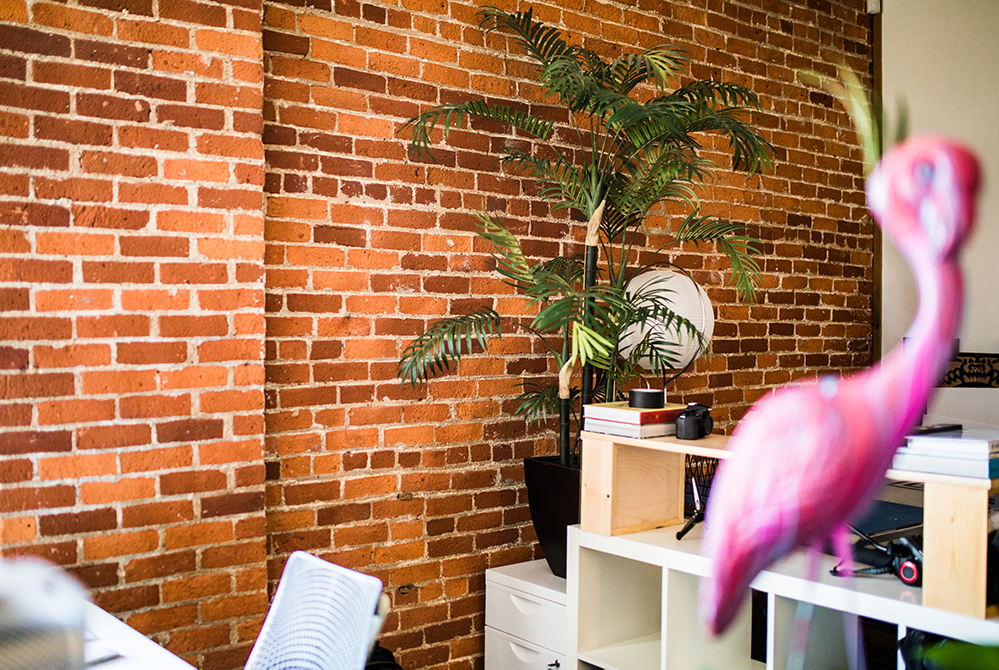When I first started to write this blog, I wrote a line in the direction of “There’s no better way to dress up a dreary office than to get some office plants.” Then I stopped and remembered where I was sitting—our office is anything but. It’s unexpected, uncoordinated and unequivocal (trust me, these are all amazing things). And then I thought of my house—much like this office, my house is bold and bright and boisterous—and covered in plants.
Sometimes, I think that office (or house) plants really are a great way to spruce up your working or living space. But in reality, it’s much more than just a spritz of color. (You should skip down now if you don’t like flowery, lofty ideas, because that’s where this is going.)
You know how, last month, on that first warm, spring-like day of April, you felt your soul slowly peak its head out of your winter depression (figuratively, this time)? That’s the magic of nature; the shift of the air, the chirp of the birds, the sprout of a seed. This is why I love indoor plants so much. They’re a little snippet of outside, inside (in the most contained, controlled way—which is how I prefer most things).
So, to sum up a very long introduction, I love plants. But bringing a li’l life into your office isn’t something to take lightly—these are living creatures we’re talking about here. And just like you and me, they’ve each got their likes and dislikes; only difference is that if you displease them for too long, they’ll quit on you—and by that, I do mean die.
Here’s the thing, plants come and go, and unless your office is a greenhouse, you can’t avoid the latter in a lot of cases. But what you CAN do, when picking out your office plants, is have a little know-how on what will survive well in your office environment. We thought we’d round up some general tips for you if you’re on the hunt, and make some reco’s on some safe-bets for office plants. If you’re in the market; ready, set, go!
ABC, Easy as 1,2,3
The basics. The absolute first thing to think about before picking your office plant is light, because it’s really the one thing you don’t have much control over in a space. Many plants have specific needs when it comes to light exposure; too much or too little can kill it. So, evaluate your space. Does your office get a lot of natural light, and do you have options for where to place a plant as far as direct or indirect light? It matters!
A second important factor in your plant’s health is water. Different plants need different amounts of water; and this is something that’s completely in your control. Didja know that more plants die from being overwatered than underwatered? I always let the soil of my plants dry in between waterings, and then I water them all the way through (unless you have plant that has other specific needs, but I won’t recommend any of those!).
Supplies? What Supplies?
Having plants doesn’t have to cost a fortune; trust me, I see those fancy pots at Target in the home section that cost $50, and you know what? If you take a little jaunt back to the garden section, you’ll find some reasonably priced pots that do just as well (most of the time better). The most important considerations about pots are 1. Make sure that they have a drainage hole at the bottom and 2. Choose a clay pot, they fare better. Both of these considerations will ensure that the soil drains well, which will help you avoid root rot or any other moldy developments. And while you’re grabbing a pot—make sure it has a plant saucer, or buy a cheap plastic one. Watering your plants all the way through can be messy business! Outside of a pot, your needs for a plant are pretty minimal. I water mine with a cup (no need to be fancy), and I use a basic indoor plant soil mix.
The Perfect Office Plants
There are plenty of plants that seem like they’re built for office life. And by that, I mean they’re extremely difficult to kill and can handle a lot of neglect. You can forget about them for a few weeks, and if you take good care of them, they’ll grow like crazy.

Pothos
This is actually my favorite plant, and it’s probably because they’re so easy to take care of. It makes them incredibly rewarding. Give ‘em a little T-L-C, and they’ll grow an L-O-T. They’re hanging plants that come in a variety of colors, shapes and textures—but I highly recommend going with the classic golden pothos, or Devil’s Ivy; some pothos are sensitive to light (they’ll say “low-light” in the care directions). I’ve killed many a low-light pothos in my high-light apartment, but a Devil’s Ivy has never steered me wrong. They’ll do well in either high-light or low-light environments (but they do need some light). And, as I’ve mentioned, they grow well when you let the soil become dry to the touch in between waterings. Plus, when your pothos get long and unwieldy, you can propagate that sucker.

Snake Plant
A classic that is also nearly indestructible. It’s great because it comes in a couple of different colors and shapes, but ultimately, you’re looking at a plant that is great at filling tall, narrow spaces that’s not high-maintenance about light. A snake plant will grow if it is tended to and receives light, but it’ll survive in low-light situations (which is why you see them in so many malls and stores). A fun fact: A snake plant is officially known as a Sansevieria, and a Sansevieria cylindrica might be one of the coolest looking house plants, just IMO.
ZZ Plant
So, the ZZ plant is for those of you with dark work spaces, maybe the only light you get at all is fluorescent (in which case, I’m so sorry. Are you okay?). These guys actually run from the light, and while I am forced to acknowledge that I can’t mean that literally, I mean it pretty dang closely to literally. They will visually lean and move away from the light when they have too much of it.
Succulents
I’m mostly including succulents on this list to dispel some rumors, and hopefully convince everyone to stop buying (and killing) them all. A lot of people buy succulents because they’re pretty darn resilient. But somewhere along the line, common knowledge misled people to think that means that they are resilient enough to survive low-light environments, which is the furthest from the truth. Succulents are behaviorally the opposite of ZZ Plants, they love the sunlight, and they’ll move up and toward wherever the source of sunlight is. So, they’re great desk plants, if your desk is right in front of a window that receives significant daylight hours. When succulents don’t receive enough light, they grow tall and lanky. And, as they are succulents, they don’t need to be watered often. Again, I let them dry out completely between waterings.
The cool thing about them is that they also propagate, but that’s a significant process that takes a long time (you have to be dedicated to growing these guys if you’re gonna propagate, but it’s really a lot of fun and I recommend it!).
Most Important Pro-Tip(s)
After writing all of this down and realizing how much content I have to pare back because it’s already too long, I feel like I’m pretty qualified to make a couple of final, pro-tip hurrahs as it pertains to caring for office plants:
First, just listen to your plant. I mean it—pay attention to what it’s telling you by its behavior. If it’s not happy, it’ll tell you what’s wrong. If your plant has water droplets forming on its leaves or its tips—it’s receiving too much water and you should back off for a bit. If your plant is physically leaning toward or away from the source of light, it’s telling you it needs more or less light (I often even just rotate my plants to straighten them out). If your plant is drooping or its leave ends crisping, it may need more water. Just look and listen.
Second—when in doubt, Google it. There is a wealth of knowledge out there about every plant, especially the more common ones aforementioned. If you know what type of plant it is, which you always should, just type in the plant name and a description of the problem. “Spider plant brown ends” will unleash a world of possibilities; but much like WebMD, be careful what you get yourself into, or you’ll kill your plant trying to fix it. After all, I start most of my know-it-all rants with, “I read this article once…”

Finally, I’ve made having an office plant a whole ordeal, but really, they’re great additions to an office space, and they don’t have to be a lot of work. Or, you can make things really easy for yourself and bring in a fake plant, like MT’s jungle canopy. Whatever your preference—
Random Tid Bits
- Sticking a clove of garlic in your plants deters bugs, scares off vampires and …grows more garlic.
- Pothos, and many other plants, are poisonous to cats (animals in general, I suppose).
- The only time I repot my plants is when they’re root bound—meaning the roots are circling the pot and often times come out of the drainage hole in the bottom. There’s rarely ever another time or reason to repot.
You can really have any plant in your office if you’re up to take care of it. This list was not meant to deter you from a plant you find that you like—just make sure you can take care of it! We’ve also got a diffenbachia that’s growing like crazy, two dracaenas and two yucca cane plants at OLG. They’re all fairly easy to take care of! Visit your local greenhouse or Lowe’s (a personal fave) and take a gander.
Thanks for letting me nerd out on you all.




